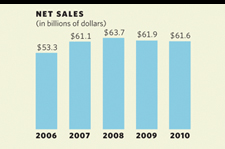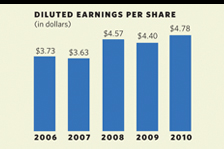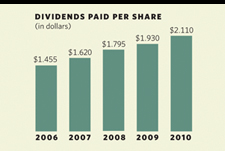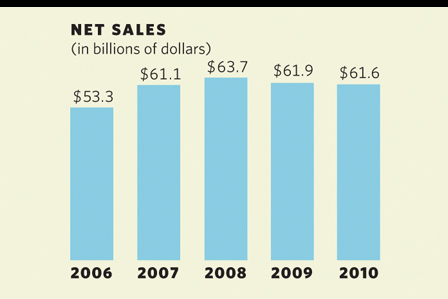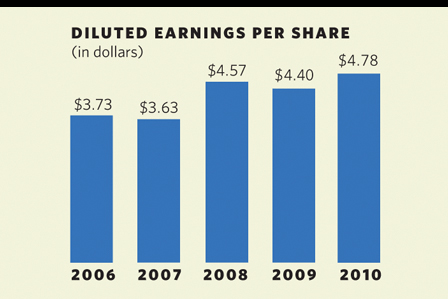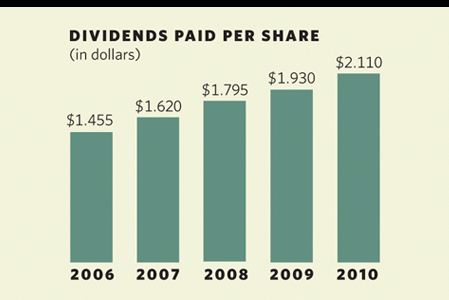2010 RESULTS
We continued to deliver earnings growth in 2010, with many of our businesses performing well in light of the macroeconomic conditions. Several factors impacted the health care industry in general and Johnson & Johnson. Medical devices and consumer businesses felt the effects of a continued economic slowdown. In health care, we anticipate continuing to feel those effects in 2011. There were costs associated with U.S. health care reform, which was implemented early in the year. In addition, we faced lost sales and remediation costs resulting from our consumer over-the-counter product recalls, as well as generic competition in our pharmaceuticals business.
Despite these headwinds, we continued to increase earnings while maintaining investments for future revenue and earnings growth. With these investments, we are developing a number of exciting new products that have the potential to address significant unmet health care needs.
Worldwide sales for 2010 were $61.6 billion, a decrease of 1.3 percent operationally (reflecting the challenges noted as well as the 53rd accounting week included in the 2009 results). Adjusted earnings were $13.3 billion(1), an increase of 2.9 percent despite a sales decline. Adjusted earnings per share increased 2.8 percent(1).
In a tough global economy, we maintained our financial discipline. We generated free cash flow of approximately $14 billion(2) and held our AAA credit rating. We also executed a $1.1 billion debt offering at the lowest interest rate for long-term corporate debt in history.
We had a one-year decline in total shareholder return of about half a percent. Over longer time frames, we continue to compare favorably to most stock indices, beating all major sector performance benchmarks on a three-year and 10-year basis.
The one-year decline in shareholder return was a disappointing performance for us, but reflects both the uncertainty around health care reform that hampered many in our sector and the impact of our consumer product recalls.
(1) Excludes special items.
(2) Free cash flow is defined as operating cash flow less capital spending. See Reconciliation of Non-GAAP Financial Measures.

